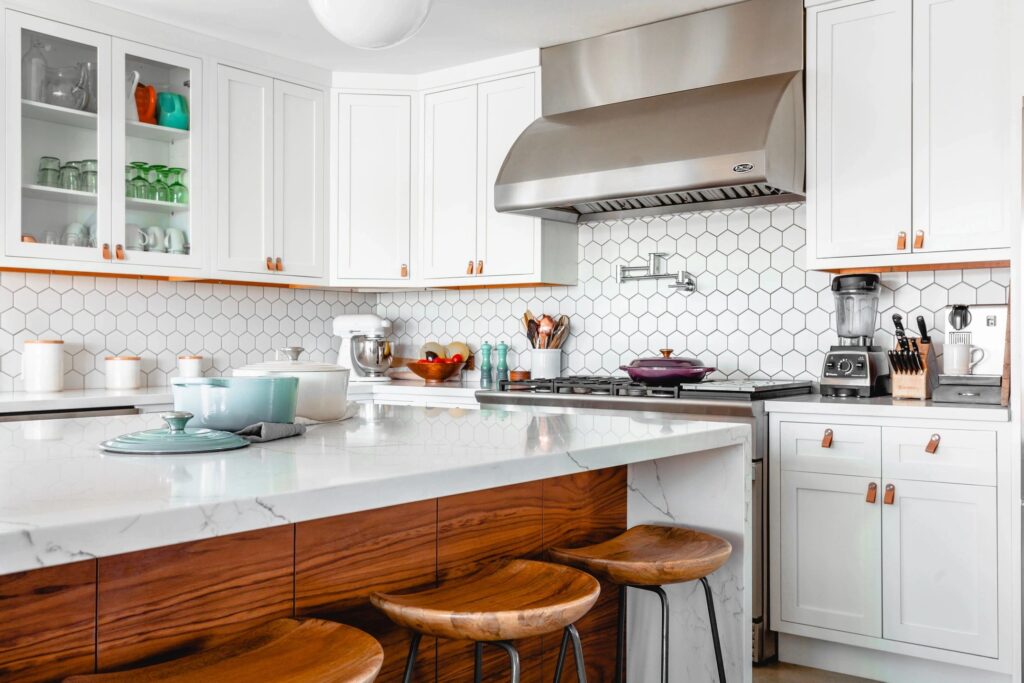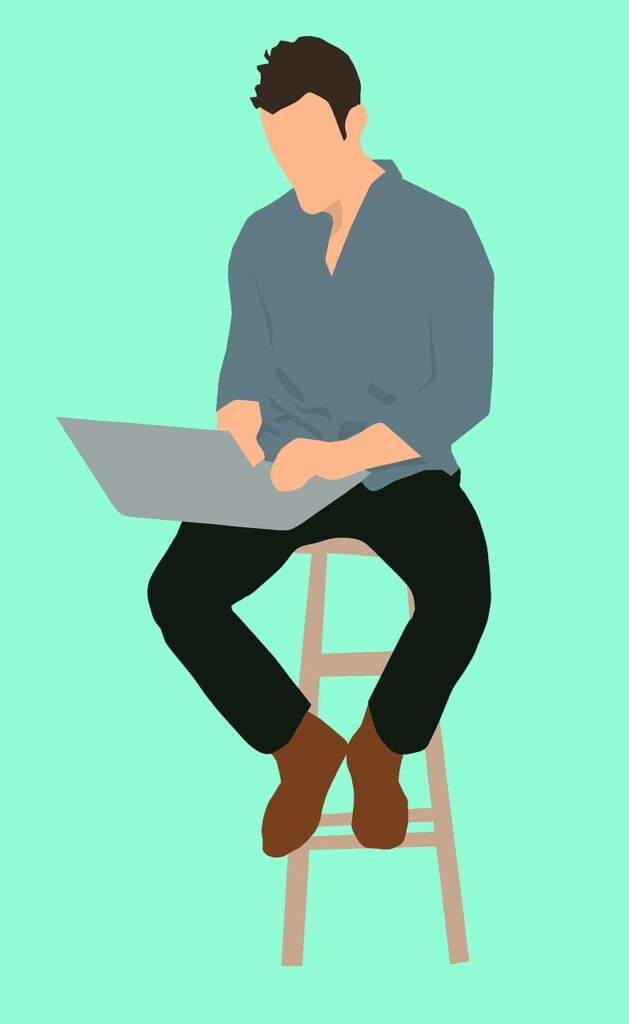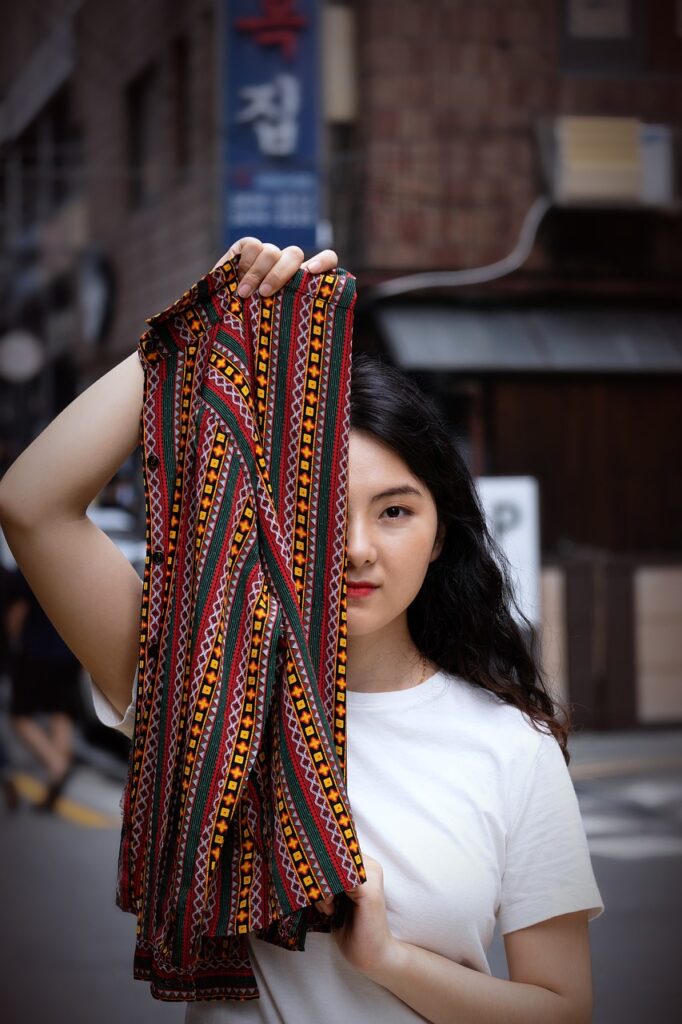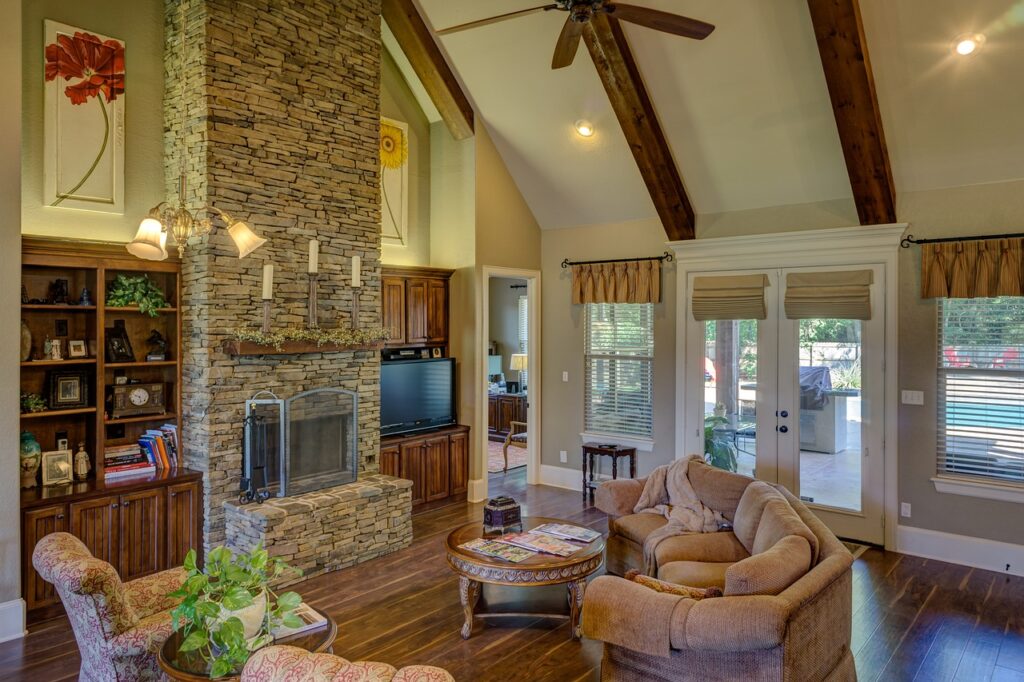To Share is to Show You Care!
Interior design projects require careful selection of materials and products to bring your vision to life. The process of finding and selecting the right materials can be challenging and time-consuming. In this article, we will guide you through the steps to help you find the best materials and products for each interior design project. With our expert advice and practical tips, you’ll be able to create stunning spaces that reflect your style and meet your clients’ expectations.
Introduction
When embarking on an interior design project, it’s essential to start with a clear vision in mind. Understanding your design style, setting a budget, and conducting thorough research are crucial steps in the process. By carefully evaluating the materials and products available, you can make informed decisions that align with your design goals and client expectations.


1. Defining Your Design Style

Your design style sets the foundation for your project. Take the time to identify your preferences, whether it’s modern, minimalist, traditional, or eclectic. Understanding your style will help you narrow down the materials and products that best suit your design vision.
2. Setting a Budget
Establishing a budget is vital to ensure that you allocate your resources efficiently. Consider the costs of materials, labor, and any additional expenses. It’s crucial to strike a balance between quality and affordability to achieve the desired results.

3. Researching Materials and Products

To find the best materials and products, conduct thorough research. Utilize online platforms, visit showrooms, and consult with industry professionals. Look for materials that match your design style, are durable, and offer the desired aesthetic appeal.
4. Evaluating Quality and Durability
Quality and durability are essential factors to consider when selecting materials and products. Examine the materials closely, check for warranties, and read customer reviews. Investing in high-quality materials will ensure longevity and customer satisfaction.

5. Considering Functionality and Practicality

While aesthetics plays a significant role in interior design, don’t overlook functionality and practicality. Evaluate how materials and products will perform in everyday use. Consider factors like maintenance, ease of cleaning, and suitability for specific spaces.
6. Exploring Sustainable and Eco-Friendly Options
In today’s environmentally conscious world, incorporating sustainable and eco-friendly materials into your design is a commendable choice. Look for products made from recycled or renewable materials and consider energy-efficient options to minimize your project’s environmental impact

7. Seeking Inspiration from Design Trends

Keeping up with design trends can spark inspiration for your projects. Stay updated on the latest interior design trends and explore how you can incorporate them into your designs. However, remember to balance trends with timeless elements to ensure longevity.
8. Collaborating with Suppliers and Contractors
Building relationships with reliable suppliers and contractors is essential. They can provide valuable insights, recommend suitable materials and products, and offer competitive pricing. Collaborate closely with them to ensure seamless execution of your design vision.

9. Making Informed Decisions

As you gather information and explore various options, it’s crucial to make informed decisions. Consider factors like aesthetics, functionality, durability, and budget constraints. Evaluate each option carefully before finalizing your choices.
10. Ensuring Compatibility and Cohesion
Interior design projects involve multiple elements that need to work together harmoniously. Ensure that the materials and products you select are compatible with each other. Aim for a cohesive design that creates a unified and visually appealing space.

11. Addressing Client Preferences

If you’re working on a client project, it’s essential to take their preferences into account. Understand their vision, listen to their feedback, and incorporate their style choices when selecting materials and products. Collaboration and open communication are key to client satisfaction.
12. Seeking Expert Advice
When in doubt, seek expert advice from interior designers, architects, or industry professionals. They can offer valuable insights and suggest alternative solutions. Their experience and expertise will help you make well-informed decisions throughout your project.

13. Reviewing and Comparing Options

Before making final selections, review and compare your options. Consider factors like cost, quality, aesthetics, and functionality. Create a shortlist of materials and products that meet your criteria and then evaluate them further before making the ultimate decision.
Conclusion
Finding and selecting the best materials and products for your interior design projects requires careful consideration and research. By following the steps and tips provided in this article, you’ll be on your way to creating stunning spaces that exceed expectations. Remember to stay true to your design style, budget, and functionality requirements while exploring sustainable and eco-friendly options. Collaborate with trusted suppliers and contractors, seek expert advice when needed, and make informed decisions. With the right approach, your interior design projects will shine with excellence and creativity.
FAQs (Frequently Asked Questions)
Q1: How do I define my design style?
A: Defining your design style requires self-reflection and exploration. Look for inspiration in magazines, online platforms, and real-life examples. Consider what appeals to you and aligns with your personal preferences.
Q2: Should I prioritize aesthetics over functionality?
A: While aesthetics is essential, don’t overlook functionality. Strive for a balance between both aspects to ensure your design not only looks great but also serves its intended purpose.
Q3: Are sustainable materials more expensive?
A: Sustainable materials can sometimes come at a higher price point due to their production methods and sourcing. However, it’s important to consider the long-term benefits and reduced environmental impact they offer.
Q4: Can I mix different design styles in one project?
A: Yes, mixing different design styles can add visual interest and uniqueness to your project. However, it’s crucial to maintain a sense of cohesion and balance to create a harmonious overall look.
Q5: How can I find reliable suppliers and contractors?
A: Seek recommendations from fellow designers or industry professionals, read reviews, and meet with potential suppliers and contractors in person. Building relationships based on trust and open communication is key.
Q6: How do I choose interior design materials?
A: When choosing interior design materials, consider factors such as your design style, budget, functionality, durability, and sustainability. Research different materials, visit showrooms, consult with industry professionals, and review customer reviews. Select materials that align with your vision, offer the desired aesthetic appeal, and meet your specific project requirements.
Q7: Where to get material samples for interior design?
A: Material samples for interior design can be obtained from various sources. You can request samples directly from manufacturers or suppliers, visit local showrooms or design centers, or explore online platforms that offer sample services. Additionally, attending trade shows and industry events can provide opportunities to gather material samples and gain insights into the latest product offerings.
Q8: How does an interior designer find suppliers?
A: Interior designers can find suppliers through various channels. Networking within the industry is crucial, as attending trade shows, joining professional associations, and connecting with other designers can provide valuable contacts. Online directories, industry publications, and online platforms dedicated to interior design can also help identify and connect with suppliers. Building relationships with reliable suppliers over time is essential for sourcing quality materials for design projects.
Q9: How do interior designers find projects?
A: Interior designers find projects through a combination of marketing efforts, referrals, and networking. Developing a strong online presence through a website, social media, and online portfolios can attract potential clients. Word-of-mouth referrals from satisfied clients and networking with industry professionals such as architects, contractors, and real estate agents can also lead to new project opportunities. Participating in design competitions or showcasing work in design exhibitions can also generate exposure and potential project leads.
Q10: How to find the right designer for your interior design and decorating projects?
A: To find the right designer for your interior design and decorating projects, consider the following steps:
- Research and gather a list of potential designers.
- Review their portfolios to assess their design style and previous work.
- Read client reviews and testimonials to gauge their reputation and client satisfaction.
- Schedule consultations or interviews to discuss your project and gauge compatibility.
- Consider their experience, qualifications, and communication skills.
- Evaluate their understanding of your vision and their ability to meet your project requirements.
- Request references and contact previous clients to inquire about their experience working with the designer.
- Trust your instincts and choose a designer with whom you feel comfortable and confident in their abilities.
Q11: What do professionals use for interior design?
A: Professionals in interior design use a range of tools and resources to aid in their work. This may include computer-aided design (CAD) software for creating digital renderings and floor plans, 3D modeling software for visualizing designs, color palettes and mood boards for inspiration, project management software for organizing tasks and timelines, and industry-specific resources such as catalogs, material samples, and supplier directories. They also rely on their experience, creativity, and knowledge of design principles to create impactful and functional spaces.
Q12: How do I get samples from a manufacturer?
A: To get samples from a manufacturer, you can reach out directly to the manufacturer through their website, contact their customer service or sales department, or utilize sample request forms available on their website. Provide detailed information about the specific materials you are interested in, including product names, colors, and any other relevant specifications. Manufacturers typically offer sample services to showcase their products and help customers make informed decisions.
Q13: How do I find my interior design niche?
A: Finding your interior design niche involves self-reflection, exploration, and identifying your passions and strengths. Consider the types of spaces, styles, or client demographics that you are most interested in and excel at working with. Research various design niches, explore different design sectors such as residential, commercial, hospitality, or retail, and gain experience through internships or assisting established designers. Pay attention to the projects that resonate with you and the feedback you receive from clients. Over time, you’ll discover your unique niche within the vast field of interior design.
Q14: How do I get new interior projects?
A: To get new interior projects, consider the following strategies:
- Establish a strong online presence through a website, social media, and online portfolios.
- Network with industry professionals such as architects, contractors, and real estate agents.
- Attend trade shows, design events, and industry conferences to connect with potential clients.
- Collaborate with other professionals in complementary fields, such as builders or home stagers, to expand your client base.
- Offer exceptional customer service to existing clients, as they may refer you to others.
- Advertise your services through targeted marketing efforts, both online and offline.
- Participate in design competitions or submit work to design publications to gain exposure.
Q15: What should you know before hiring an interior designer?
A: Before hiring an interior designer, consider the following:
- Review their portfolio to assess their design style and expertise.
- Discuss their qualifications, certifications, and experience in the field.
- Inquire about their process, including how they work with clients and their project management approach.
- Ask about their fees and payment structure, including any additional costs such as procurement fees or markup on products.
- Request references and contact previous clients to learn about their experience working with the designer.
- Clearly communicate your budget, timeline, and project expectations to ensure compatibility.
- Establish a clear contract or agreement that outlines the scope of work, deliverables, and responsibilities of both parties.
Q16: How do I get an interior design order?
A: To get an interior design order, follow these steps:
- Market your services through a professional website, social media, and targeted advertising.
- Showcase your portfolio to highlight your design expertise and previous projects.
- Network with industry professionals and potential clients to generate leads.
- Offer consultations or design presentations to showcase your skills and approach.
- Clearly communicate your design process, timeline, and pricing structure to clients.
- Provide detailed proposals that outline the scope of work, deliverables, and associated costs.
- Build trust and rapport with clients through open communication and understanding their vision.
- Demonstrate your value by offering personalized design solutions and exceptional customer service.
Q17: Do interior designers markup product?
A: Yes, interior designers often markup products as part of their business model. Markup is a common practice where designers apply a percentage or flat fee to the cost of products or materials they purchase on behalf of their clients. This markup helps cover the designer’s time, expertise, project management, and the added value they bring to the procurement process. The specific markup percentage or fee varies depending on the designer and the project.
Q18: How do I start my first interior design project?
A: To start your first interior design project, consider these steps:
- Define the scope of the project and clarify the client’s goals and budget.
- Conduct a thorough client interview to understand their preferences, needs, and lifestyle.
- Develop a design concept and create mood boards or sketches to present your ideas.
- Create a detailed project plan, including a timeline and budget breakdown.
- Collaborate with contractors, suppliers, and other professionals involved in the project.
- Source materials, furniture, and accessories that align with the design concept and meet the client’s requirements.
- Oversee the project’s implementation, managing contractors, and ensuring quality control.
- Communicate regularly with the client, providing updates and seeking feedback.
- Complete the project by adding finishing touches, styling the space, and ensuring client satisfaction.
Q19: How do interior designers start out?
A: Interior designers typically start out by gaining relevant education and experience in the field. They may complete a degree program in interior design or a related field, which provides a foundation in design principles, space planning, and material selection. Entry-level designers often work as assistants or interns for established designers or design firms, allowing them to gain practical experience, expand their knowledge, and build a professional network. As they gain experience and develop their portfolio, they can begin working on independent projects and gradually establish their own design practice.
Q20: How long does it take an interior designer to complete a project?
A: The duration of an interior design project varies depending on factors such as the project’s complexity, scale, client requirements, and the designer’s resources. Smaller projects, such as a single room redesign, can typically be completed within a few weeks to a couple of months. Larger projects, such as a full home renovation or commercial space design, can take several months to a year or more. It’s important for designers to establish clear timelines and milestones with clients, ensuring effective communication and project management throughout the process.
The Informed Minds
I'm Vijay Kumar, a consultant with 20+ years of experience specializing in Home, Lifestyle, and Technology. From DIY and Home Improvement to Interior Design and Personal Finance, I've worked with diverse clients, offering tailored solutions to their needs. Through this blog, I share my expertise, providing valuable insights and practical advice for free. Together, let's make our homes better and embrace the latest in lifestyle and technology for a brighter future.

